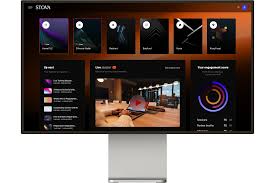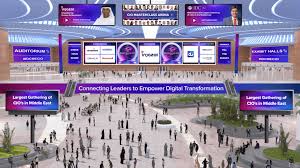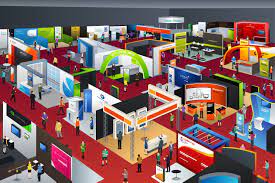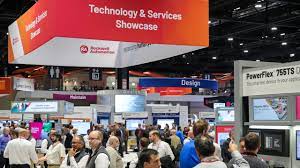The Rise of Virtual and Hybrid Event Platforms
In the wake of the global pandemic, the events industry has seen a significant shift towards virtual and hybrid event platforms. These innovative solutions have enabled event organizers to reach a wider audience, engage attendees in new ways, and provide unique networking opportunities.
Virtual event platforms allow participants to attend events remotely from anywhere in the world. Through features like live streaming, virtual booths, and interactive chat rooms, attendees can interact with speakers, sponsors, and other participants in real-time.
On the other hand, hybrid event platforms combine in-person and virtual elements to create a seamless experience for both on-site and remote attendees. This approach offers flexibility for participants who may not be able to travel to the physical event location.
One of the key advantages of virtual and hybrid event platforms is their ability to collect valuable data and analytics. Organizers can track attendee engagement, measure ROI for sponsors, and gather insights to improve future events.
As technology continues to advance, we can expect virtual and hybrid event platforms to become even more sophisticated, offering enhanced features such as AI-powered matchmaking algorithms, 3D virtual environments, and personalized content recommendations.
In conclusion, virtual and hybrid event platforms have revolutionized the events industry by providing new ways for organizers to connect with their audiences. As we navigate the evolving landscape of events in a post-pandemic world, these platforms will play an increasingly important role in shaping the future of experiential marketing.
Maximizing Event Potential: The Top 5 Advantages of Virtual and Hybrid Event Platforms
Five Key Challenges of Virtual and Hybrid Event Platforms: Technical Hurdles, Networking Limitations, Engagement Barriers, Security Issues, and Internet Reliability
- Technical difficulties can disrupt the event experience for participants.
- Limited opportunities for in-person networking and relationship building.
- Potential challenges in ensuring high levels of attendee engagement.
- Security concerns related to data privacy and online interactions.
- Dependence on stable internet connection, which may be unreliable in some regions.
1. Increased Reach
Virtual and hybrid event platforms offer the significant benefit of increased reach, as they empower organizers to connect with a broader audience by facilitating remote attendance from any location worldwide. This capability not only breaks down geographical barriers but also opens up opportunities for individuals who may not have been able to participate in traditional in-person events. By leveraging virtual and hybrid event platforms, organizers can extend their reach, engage with diverse audiences, and create more inclusive and accessible experiences for attendees globally.
2. Enhanced Engagement
Enhanced Engagement is a significant benefit of virtual and hybrid event platforms. By incorporating interactive features like live chat, virtual booths, and networking opportunities, these platforms create a dynamic environment that fosters increased attendee engagement and interaction. Attendees can actively participate in discussions, explore virtual exhibition spaces, and connect with other participants in real-time, leading to a more immersive and interactive event experience. This heightened level of engagement ultimately contributes to a more meaningful and impactful event for all involved.
3. Cost-Effective
By eliminating the need for travel and accommodation expenses, virtual and hybrid event platforms offer a cost-effective solution for both organizers and attendees. This financial advantage allows organizers to allocate their budget more efficiently, potentially investing in enhancing the event experience or reaching a larger audience. Attendees also benefit from reduced costs, making it more accessible for a wider range of participants to engage with events they may not have been able to attend in person. Overall, the cost-effectiveness of virtual and hybrid event platforms contributes to making events more inclusive and sustainable in today’s evolving landscape.
4. Data Analytics
Virtual and hybrid event platforms offer a significant advantage in the form of data analytics. By capturing and analyzing attendee behavior, preferences, and engagement metrics, organizers gain valuable insights that can be used to enhance the planning and execution of future events. This data-driven approach enables event planners to make informed decisions, tailor content to meet audience expectations, and ultimately optimize the overall event experience for all participants.
5. Flexibility
Hybrid event platforms offer a valuable level of flexibility for participants by allowing them to choose how they want to engage with an event – whether in person or remotely. This flexibility caters to the diverse preferences and circumstances of attendees, ensuring that individuals can participate in a way that best suits their needs. Whether someone prefers the immersive experience of attending in person or the convenience of joining remotely, hybrid event platforms empower participants to tailor their event experience to align with their preferences, ultimately enhancing overall engagement and satisfaction.
Technical difficulties can disrupt the event experience for participants.
Technical difficulties can disrupt the event experience for participants, posing a significant con of virtual and hybrid event platforms. Issues such as poor internet connection, software glitches, or hardware malfunctions can hinder attendees’ ability to fully engage with the event content and activities. These disruptions not only create frustration for participants but can also impact the overall success of the event by causing delays, affecting communication, and diminishing the overall user experience. Organizers must proactively address technical challenges to ensure a seamless and enjoyable experience for all participants.
Limited opportunities for in-person networking and relationship building.
One significant drawback of virtual and hybrid event platforms is the limited opportunities they offer for in-person networking and relationship building. While these platforms provide innovative ways to connect online, such as virtual chat rooms and networking sessions, they may lack the personal touch and spontaneity that often come with face-to-face interactions. Building meaningful relationships and establishing trust can be more challenging in a virtual setting, as attendees may miss out on subtle cues and non-verbal communication cues that are crucial for forming strong connections.
Potential challenges in ensuring high levels of attendee engagement.
One notable con of virtual and hybrid event platforms is the potential challenge in ensuring high levels of attendee engagement. With participants attending remotely, there may be distractions in their environment that compete for their attention during the event. Additionally, without the physical presence and face-to-face interactions that traditional events offer, maintaining audience engagement throughout the virtual or hybrid event can be more difficult. Organizers must implement creative strategies, interactive features, and compelling content to keep attendees actively participating and connected throughout the event.
Security concerns related to data privacy and online interactions.
Security concerns related to data privacy and online interactions are a significant con of virtual and hybrid event platforms. With the increasing reliance on digital technologies for events, there is a heightened risk of data breaches, unauthorized access to sensitive information, and potential cyber threats. Organizers and participants must be vigilant in safeguarding their personal data and ensuring secure online interactions to mitigate these security risks associated with virtual and hybrid events.
Dependence on stable internet connection, which may be unreliable in some regions.
One significant drawback of virtual and hybrid event platforms is their reliance on a stable internet connection, which can be unreliable in certain regions. The success of these events heavily depends on consistent internet access for both organizers and participants. Poor connectivity can lead to disruptions in live streams, difficulty accessing virtual content, and challenges in engaging with other attendees. This limitation poses a barrier for individuals in areas with limited internet infrastructure, potentially excluding them from fully participating in these events. Addressing this issue will be crucial for ensuring inclusivity and accessibility in the evolving landscape of virtual and hybrid events.










